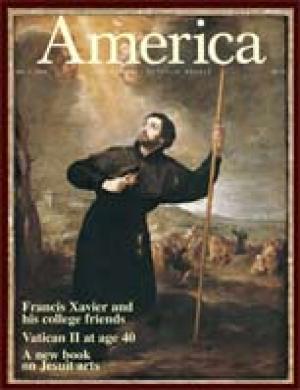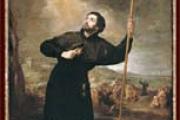Forty years ago, on Dec. 7, 1965, the Second Vatican Council issued its “Pastoral Constitution on the Church in the Modern World.” This conciliar text laid out the most challenging vision of the church’s social mission of the modern era. It proclaimed that the Catholic community sh
From its opening session in October 1962 until its close 40 years ago in December 1965, the Second Vatican Council held millions of Catholics and others riveted. Pope John XXIII, who convoked the council only 90 days after he was elected, hoped that it would update the Catholic Church, renew it spir
From the archives, the story of the early followers of St. Ignatius of Loyola
"Spots of time" is what the poet William Wordsworth called those places that imprint themselves so deeply into our minds that simply remembering them can lift our hearts - in other words, holy places. I thought about that phrase as I left Kentucky last month after visiting the Abbey of Get
Not Rhetorical
Thank you for writing about the important matter of torture and for the good editorial, The Shame of Torture (11/7).
I was a bombardier in Europe during World War II, which I regret in my old age, and I am even more ashamed of our country today because of its
Botanists in a greenhouse can cross a white flower with a red flower and raise generations of pink flowers that do not revert to red or white. This experiment provides a tiny example of evolution, but it provokes no debate because it was observed happening. The situation was different in 1859, when
The mark of authentic Christianity has always been a paradox: it is thoroughly rooted in the earth (God’s creation) and entirely bent on moving toward heaven (God himself). It is a dynamic balance if there ever was one. The virtue of hope is not different. How could it be? It is as human as ca



